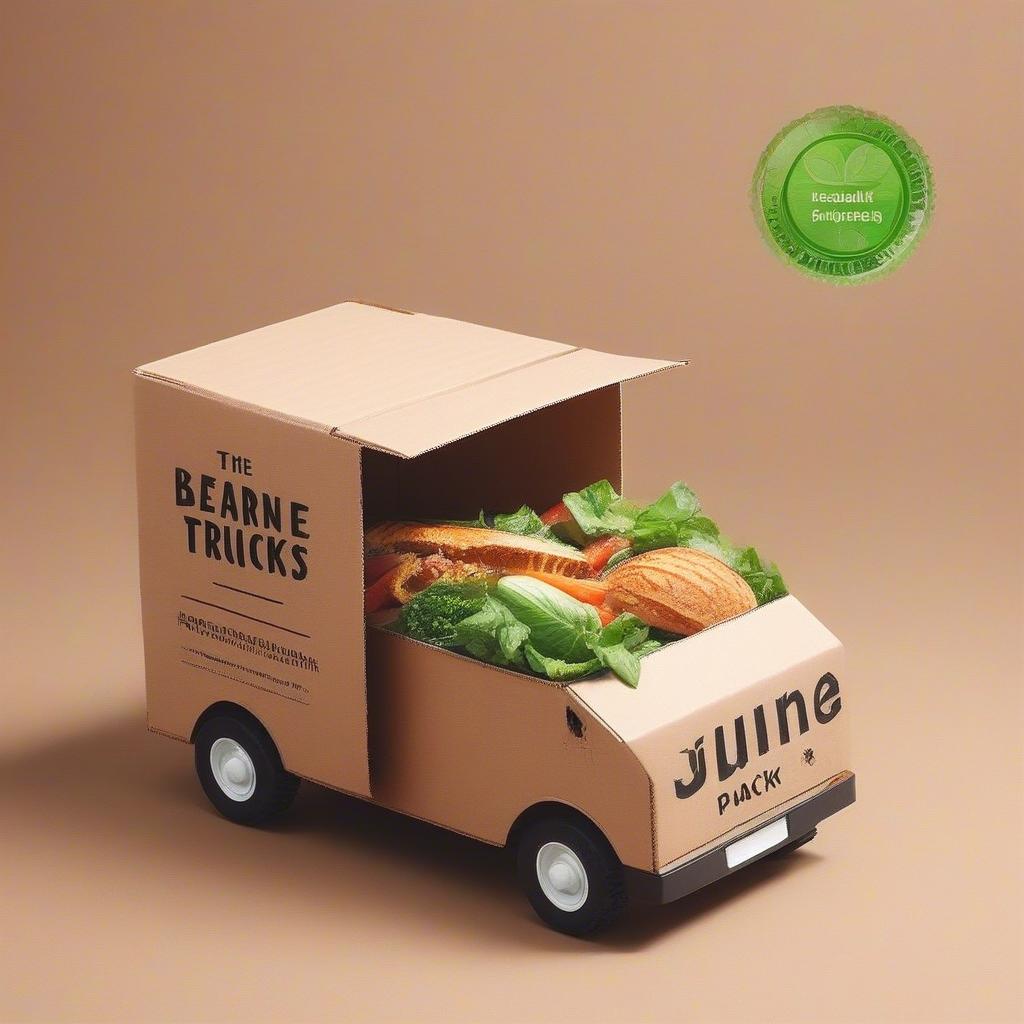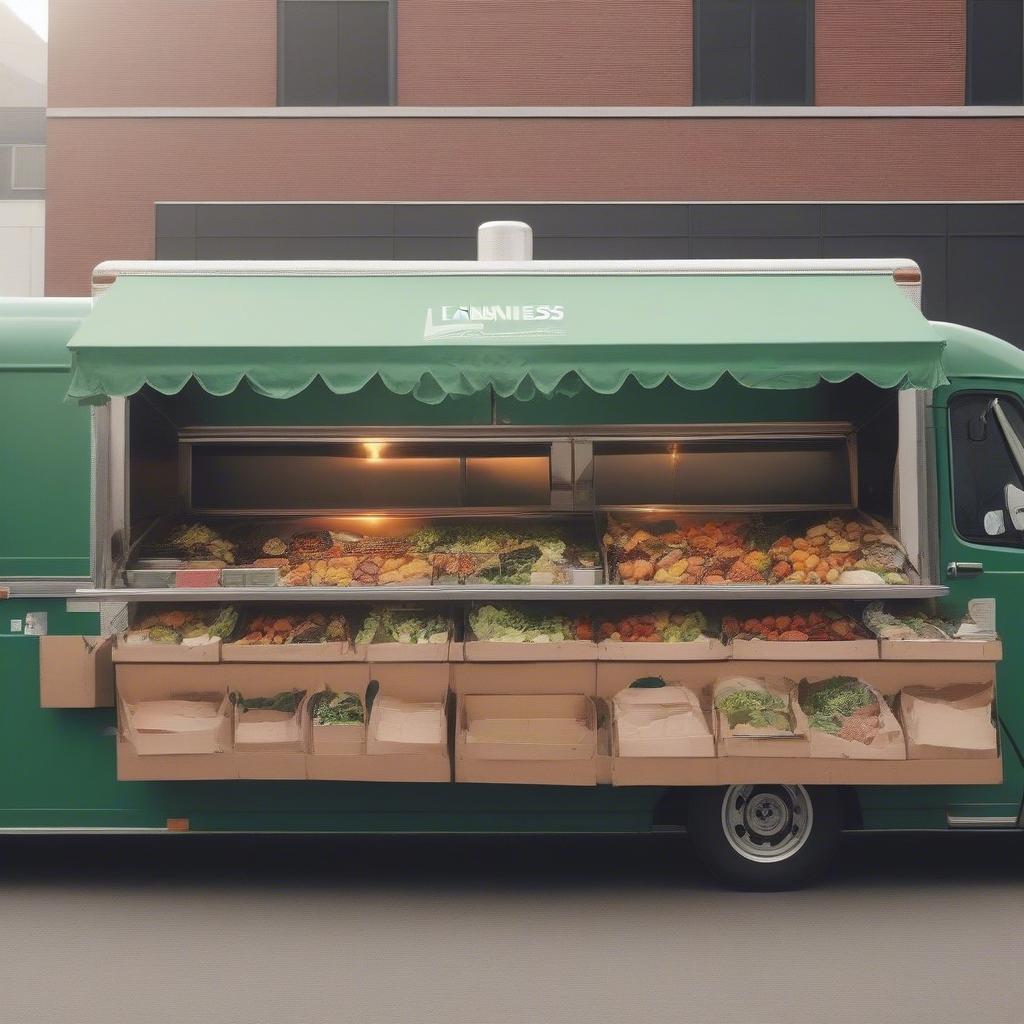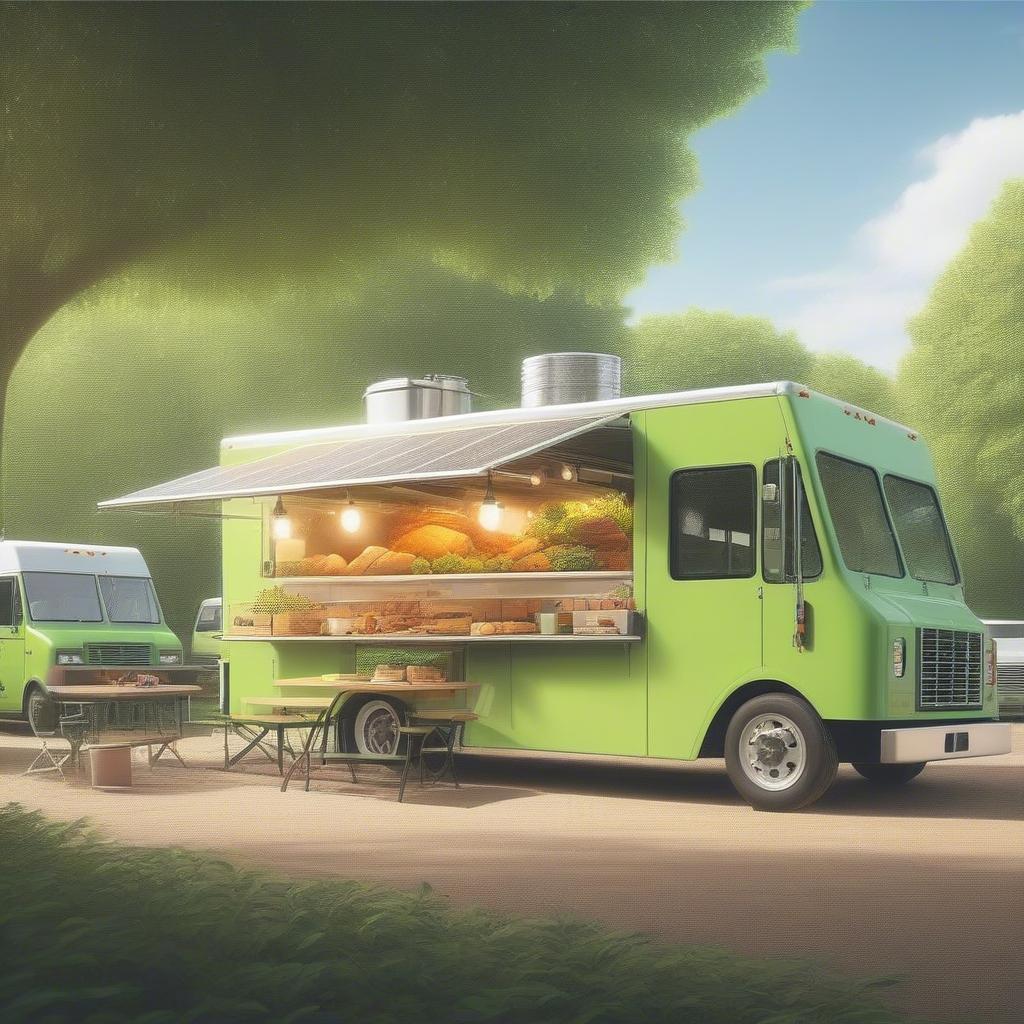The Heart of Your Mobile Culinary Empire: Why a Great Food Truck Kitchen Matters
A food truck isn’t just a vehicle; it’s a restaurant on wheels. And just like any restaurant, its success hinges on a well-designed food truck kitchen. This isn’t just about cramming in equipment; it’s about creating a space that’s efficient, safe, and allows you to consistently deliver delicious food.
Think of your kitchen layout as the choreography of your culinary performance. A well-planned space lets your team move seamlessly, reduces bottlenecks, and keeps the energy flowing. A poor layout, on the other hand, can lead to chaos, wasted time, and even safety hazards. It’s the difference between a smooth service and a stressful scramble.
Beyond the Basics: The Impact of Smart Kitchen Design
A smart food truck kitchen design isn’t just about convenience; it’s a strategic investment. Here’s why it’s so critical:
- Efficiency is King: A well-organized space means faster prep times, quicker service, and more customers served. This translates directly into higher revenue and a more profitable business.
- Safety First: Proper ventilation, designated work areas, and clear pathways minimize the risk of accidents and injuries. A safe kitchen is a happy kitchen, and a happy kitchen is a productive kitchen.
- Food Quality & Consistency: A streamlined workspace allows your team to focus on the food. It reduces the risk of errors and ensures that every dish is prepared with care and consistency. This is vital for customer satisfaction and building a loyal following.
- Stress Reduction: Working in a cramped and disorganized space is incredibly stressful. A well-planned kitchen layout makes the entire operation smoother and more enjoyable for everyone.
- First Impressions Matter: While customers may not see the interior of your truck, a well-designed space contributes to your overall professionalism. A clean and organized appearance inspires confidence and demonstrates a commitment to quality.
In short, a carefully planned food truck kitchen is the foundation for a thriving business. It’s the engine that powers your culinary journey, so it pays to invest the time and effort to get it right.
Planning Your Space: Laying the Groundwork for Success
Before you even think about equipment, you need to understand your space and your needs. This planning phase is crucial and involves careful consideration of several factors:
1. The Size and Shape of Your Canvas
The dimensions of your truck are your starting point. This dictates how much space you have to work with. Consider the following:
- Length, Width, and Height: Measure your truck’s interior meticulously. Note any wheel wells, indentations, or other structural features that might affect your layout.
- Interior Height: Don’t forget to factor in enough headroom for comfortable movement, especially if your staff is tall.
- Accessibility: Where are the doors and windows? How will these impact your workflow and customer interaction?
- Existing Features: Are there any pre-installed features, like sinks or vents, that you’ll need to work around?
This initial assessment is key to accurately planning your kitchen layout.
2. Menu Matters: Designing for Your Dishes
Your menu should be your guiding light during the design process. Ask yourself:
- What are your core dishes? Are you focused on burgers, tacos, gourmet sandwiches, or something else entirely? The complexity and volume of your dishes will directly impact your equipment needs and workflow.
- What are the key steps in your preparation process? Breaking down your menu into individual tasks helps you identify the equipment and work areas required.
- How many people will be working in the kitchen at once? Consider how much space each person needs to move comfortably and work efficiently.
- Will you be doing on-the-spot cooking or preparing items beforehand? This decision will impact your storage and prep space needs.
- Are you planning on expanding your menu in the future? Design a kitchen that can accommodate future growth and avoid costly renovations down the road.
By understanding your menu and its demands, you’ll be able to create a kitchen design that perfectly supports your culinary goals.
3. The Flow State: Analyzing Your Workflow
Workflow is the heart of efficiency. A smooth workflow minimizes steps, reduces bottlenecks, and keeps your team moving like a well-oiled machine. Consider:
- Prep Area: How will you prep ingredients? Will it be done before service starts, or throughout the day?
- Cooking Area: How many cooking stations will you need? Are there specialized equipment requirements for certain dishes?
- Assembly Area: How will you assemble and plate dishes for customers?
- Cleaning Area: Where will you wash dishes and dispose of waste?
- Storage: Where will you store ingredients, equipment, and supplies?
By carefully planning each stage of your workflow, you can ensure that your food truck kitchen is both efficient and functional.
4. Power and Plumbing: Essential Considerations
Don’t forget about the infrastructure that will power your operation:
- Electrical Needs: How much power will your equipment require? Consult with an electrician to ensure you have enough capacity.
- Propane or Natural Gas: If you’re using gas equipment, you’ll need to ensure proper installation and venting.
- Water Supply and Drainage: Where will you source water, and where will you dispose of wastewater? Will you need a holding tank?
- Plumbing Codes and Regulations: Make sure your plumbing meets local health and safety standards.
These factors might seem mundane, but they are vital to the safe and efficient operation of your food truck kitchen.
Essential Equipment: Building Your Culinary Arsenal
Now that you have a clear picture of your space and needs, it’s time to choose your equipment. Here’s a breakdown of some essential items:
1. Cooking Equipment: The Heart of the Action
The type of cooking equipment you need depends entirely on your menu. Some common options include:
- Griddle or Flat Top: Ideal for burgers, pancakes, and other flat-top cooking.
- Fryer: Essential for anything fried, from French fries to chicken tenders.
- Stove or Burners: Necessary for soups, sauces, and other stovetop preparations.
- Oven: Great for baking and roasting, if your menu calls for it.
- Combi Oven: A versatile option that combines steaming, baking, and roasting capabilities.
- Specialty Equipment: Depending on your niche, you might need specialized equipment like a rotisserie, a pizza oven, or a smoker.
- Refrigeration and Freezing: Reliable refrigeration is essential for keeping ingredients fresh and safe. Consider the size and capacity of your refrigerator and freezer units.
- Countertop Refrigeration: Convenient for frequently used ingredients and condiments.
Choose equipment that fits your needs, is reliable, and is compact enough for the limited space of a food truck kitchen.
2. Prep Equipment: Setting the Stage for Success
Don’t underestimate the importance of quality prep equipment:
- Work Tables: Stainless steel work tables are durable, easy to clean, and provide a dedicated space for prepping ingredients.
- Cutting Boards: Invest in a set of food-safe cutting boards of different colors to prevent cross-contamination.
- Food Processor or Blender: A helpful tool for chopping vegetables, making sauces, and other tasks.
- Knives and Utensils: A good set of sharp knives and essential cooking utensils is a must.
Investing in quality prep tools will make your team’s work easier and more efficient.
3. Cleaning & Sanitation: Keeping It Safe & Sanitary
Maintaining a clean and sanitary environment is essential for food safety:
- 3-Compartment Sink: Essential for washing, rinsing, and sanitizing dishes and utensils.
- Handwashing Sink: A dedicated handwashing sink is required to prevent the spread of bacteria.
- Storage Solutions: Food-safe storage containers for both dry and refrigerated items.
- Garbage & Recycling Bins: Invest in well-sealed bins for waste disposal.
- Sanitizer and Cleaning Supplies: Keep your kitchen clean with the appropriate cleaning and sanitizing solutions.
Proper hygiene and sanitation practices are critical to protecting your customers and your business.
4. Ventilation: Clearing the Air
Proper ventilation is crucial for safety and comfort:
- Exhaust Hood: An exhaust hood removes smoke, grease, and cooking odors.
- Make-up Air System: A make-up air system helps to balance the airflow in the kitchen.
Adequate ventilation ensures that the air is clean and that your staff can work comfortably.
Optimizing Your Layout: Tips for Maximum Efficiency
Once you have a solid understanding of your equipment needs, it’s time to focus on the actual kitchen layout. Here are some design tips to optimize your space:
1. The “Work Triangle” Principle
The “work triangle” is a classic kitchen design concept that focuses on the relationship between the three main work areas: the cooking station, the prep area, and the cleaning area. The goal is to create a triangle that allows for easy movement between these three points, minimizing steps and maximizing efficiency. This is especially crucial in a confined food truck kitchen.
2. Zone Your Space
Divide your kitchen into specific zones: a prep zone, a cooking zone, an assembly zone, and a cleaning zone. This helps to organize your space and prevents cross-contamination. Label each zone and provide appropriate tools and equipment within each.
3. Wall Space is Your Friend
Utilize wall-mounted shelves and racks to store ingredients and equipment. This frees up counter space and makes it easier to find what you need. Use magnetic strips to store knives.
4. Vertical Storage
Think vertically to maximize storage space. Consider using tiered shelves or stackable bins to make use of the vertical space in your food truck kitchen.
5. Smart Storage Solutions
Invest in clear, labeled storage containers to easily see your ingredients and prevent food waste. Use rolling carts to easily move equipment and ingredients within your kitchen.
6. Everything in its Place
Assign a specific location for every tool, utensil, and ingredient. This helps to keep the kitchen organized and prevents clutter. Implement a ‘clean as you go’ policy so your space never gets overwhelmed.
7. Prioritize Ergonomics
Arrange your equipment so that it’s easily accessible and reduces the need for awkward reaching or bending. This can help prevent injuries and make the workflow more comfortable for your team.
8. Consider Aisles and Pathways
Ensure that there is enough space to move around comfortably, especially if more than one person is working in the kitchen. Design aisles that are wide enough for easy access but not overly large that they waste precious space.
The Importance of Professional Help
While you can certainly attempt to design your food truck kitchen yourself, working with a professional is often the best investment you can make. Here’s why:
1. Expertise and Experience
Professional designers have experience in creating efficient and functional kitchens in small spaces. They can help you avoid costly mistakes and develop a layout that meets your specific needs. They also know codes and regulations.
2. 3D Models and Visualizations
Professional designers can create 3D models and visualizations of your kitchen, allowing you to see the layout before you commit to building it.
3. Knowledge of Materials & Equipment
Professionals have knowledge of the latest materials and equipment that are suitable for use in a food truck kitchen. They can guide you in selecting durable and reliable equipment that fits your needs and budget.
4. Optimizing Workflow and Efficiency
A designer will look at your menu and workflow and create a space that is custom-designed for your business. They will help optimize the flow and design a work space that maximizes efficiency.
5. Saves Time and Money
While a professional service has an upfront cost, the time saved, minimized errors, and increased efficiency it can bring to your business will far outweigh the cost, in the long run.
Learn Business: Your Partner in Culinary Success
Designing the perfect food truck kitchen is a critical step in setting up a successful food truck business. The process can be overwhelming, but with the right planning and resources, you can create a space that’s both efficient and enjoyable to work in.
That’s where Learn Business comes in. We understand that setting up and running a food truck is challenging. That’s why we offer tailored support and resources to help you navigate the complexities of the industry.
How Learn Business Can Support Your Food Truck Business:
- Customizable Templates: We provide various templates designed for the food truck business, from business plans and financial projections to marketing plans and operations manuals. These templates are crafted by industry experts and will be specifically tailored to your specific food truck.
- Business Plan Guidance: Our step-by-step guidance ensures that your business plan is solid, comprehensive, and ready to impress investors and lenders.
- Financial Planning Tools: We provide resources and templates to help you manage your finances effectively, from budgeting and forecasting to tracking your revenue and expenses.
- Marketing Strategy Support: We help you develop a comprehensive marketing plan to reach your target audience and build a loyal customer base.
- Operational Frameworks: We provide frameworks for daily operations, safety and sanitation protocols, and hiring and managing staff.
- Expert Insights: Our guides and resources provide industry insights and practical tips to help you succeed in the competitive food truck market.
- Community and Support: Access our community forums and connect with other food truck entrepreneurs to share your experiences, ask questions, and get valuable advice.
Learn Business is not just about templates; we are about providing the support and guidance you need to thrive in the food truck industry. We are here to help you from the initial stages of planning to the day-to-day operations. We’re your partner in building a successful and sustainable food truck business.
In conclusion, designing the perfect food truck kitchen requires careful planning, attention to detail, and the right resources. It’s an investment in your business’s success, and with the right approach, you can create a culinary space that is both functional and inspiring. We hope this article helped you understand how to build the ideal food truck kitchen that will keep you serving the public for years to come. Remember to always adapt and evolve as your business grows, and don’t hesitate to seek professional help when needed. With passion and dedication, you can create a thriving food truck that customers will love.



Leave a Reply